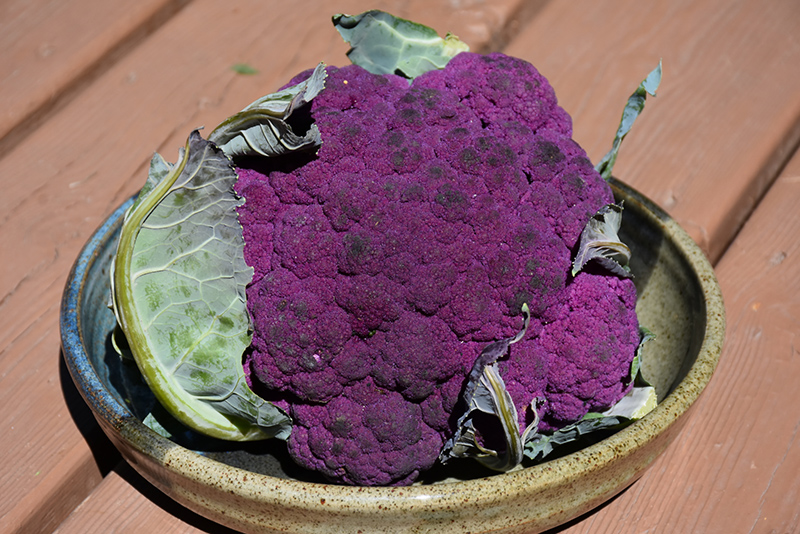Plant Finder
Violet Queen Cauliflower
Brassica oleracea var. botrytis 'Violet Queen'
Height: 18 inches
Spacing: 24 inches
Sunlight:
![]()
Hardiness Zone: (annual)
Description:
A highly productive variety perfect for sunny containers or gardens; produces stunning rich purple heads that stand out against dark green leaves; delicious and sweet making it a great addition to vegetable trays or salads; color fades when cooked
Edible Qualities
Violet Queen Cauliflower is an annual vegetable plant that is typically grown for its edible qualities. The round green tightly-wrapped heads of foliage are typically harvested when mature. The heads have a delicious taste and a crunchy texture.
The heads are most often used in the following ways:
- Fresh Eating
- Eating When Cooked/Prepared
- Cooking
- Baking
- Freezing
Planting & Growing
Violet Queen Cauliflower will grow to be about 18 inches tall at maturity, with a spread of 20 inches. When planted in rows, individual plants should be spaced approximately 24 inches apart. This fast-growing vegetable plant is an annual, which means that it will grow for one season in your garden and then die after producing a crop.
This plant is typically grown in a designated vegetable garden. It should only be grown in full sunlight. It does best in average to evenly moist conditions, but will not tolerate standing water. It is not particular as to soil pH, but grows best in rich soils. It is somewhat tolerant of urban pollution. Consider applying a thick mulch around the root zone over the growing season to conserve soil moisture. This is a selected variety of a species not originally from North America, and it is considered by many to be an heirloom variety.
Violet Queen Cauliflower is a good choice for the vegetable garden, but it is also well-suited for use in outdoor pots and containers. It is often used as a 'filler' in the 'spiller-thriller-filler' container combination, providing the canvas against which the thriller plants stand out. Note that when growing plants in outdoor containers and baskets, they may require more frequent waterings than they would in the yard or garden.




